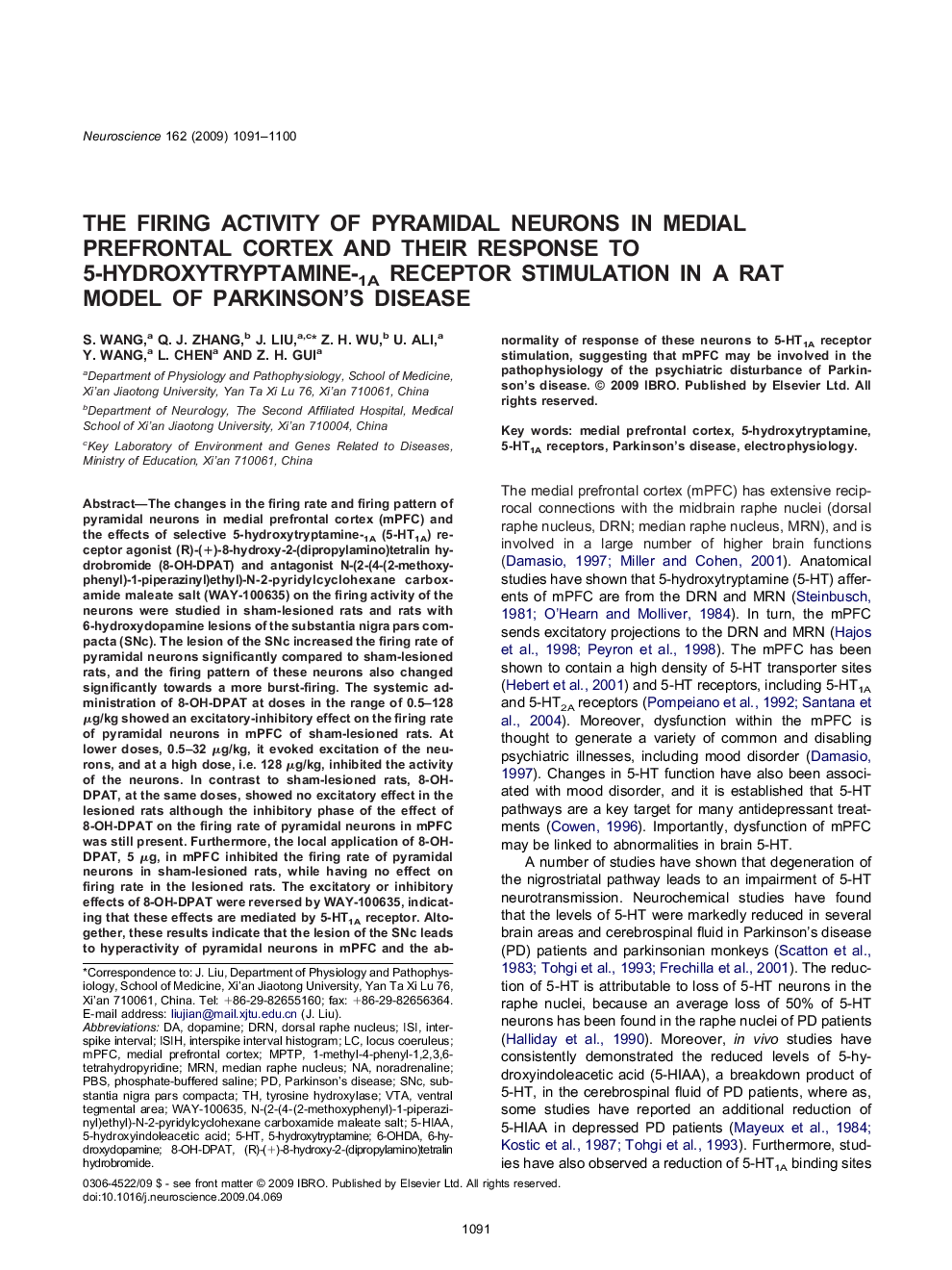| Article ID | Journal | Published Year | Pages | File Type |
|---|---|---|---|---|
| 4340229 | Neuroscience | 2009 | 10 Pages |
The changes in the firing rate and firing pattern of pyramidal neurons in medial prefrontal cortex (mPFC) and the effects of selective 5-hydroxytryptamine-1A (5-HT1A) receptor agonist (R)-(+)-8-hydroxy-2-(dipropylamino)tetralin hydrobromide (8-OH-DPAT) and antagonist N-(2-(4-(2-methoxyphenyl)-1-piperazinyl)ethyl)-N-2-pyridylcyclohexane carboxamide maleate salt (WAY-100635) on the firing activity of the neurons were studied in sham-lesioned rats and rats with 6-hydroxydopamine lesions of the substantia nigra pars compacta (SNc). The lesion of the SNc increased the firing rate of pyramidal neurons significantly compared to sham-lesioned rats, and the firing pattern of these neurons also changed significantly towards a more burst-firing. The systemic administration of 8-OH-DPAT at doses in the range of 0.5–128 μg/kg showed an excitatory-inhibitory effect on the firing rate of pyramidal neurons in mPFC of sham-lesioned rats. At lower doses, 0.5–32 μg/kg, it evoked excitation of the neurons, and at a high dose, i.e. 128 μg/kg, inhibited the activity of the neurons. In contrast to sham-lesioned rats, 8-OH-DPAT, at the same doses, showed no excitatory effect in the lesioned rats although the inhibitory phase of the effect of 8-OH-DPAT on the firing rate of pyramidal neurons in mPFC was still present. Furthermore, the local application of 8-OH-DPAT, 5 μg, in mPFC inhibited the firing rate of pyramidal neurons in sham-lesioned rats, while having no effect on firing rate in the lesioned rats. The excitatory or inhibitory effects of 8-OH-DPAT were reversed by WAY-100635, indicating that these effects are mediated by 5-HT1A receptor. Altogether, these results indicate that the lesion of the SNc leads to hyperactivity of pyramidal neurons in mPFC and the abnormality of response of these neurons to 5-HT1A receptor stimulation, suggesting that mPFC may be involved in the pathophysiology of the psychiatric disturbance of Parkinson's disease.
